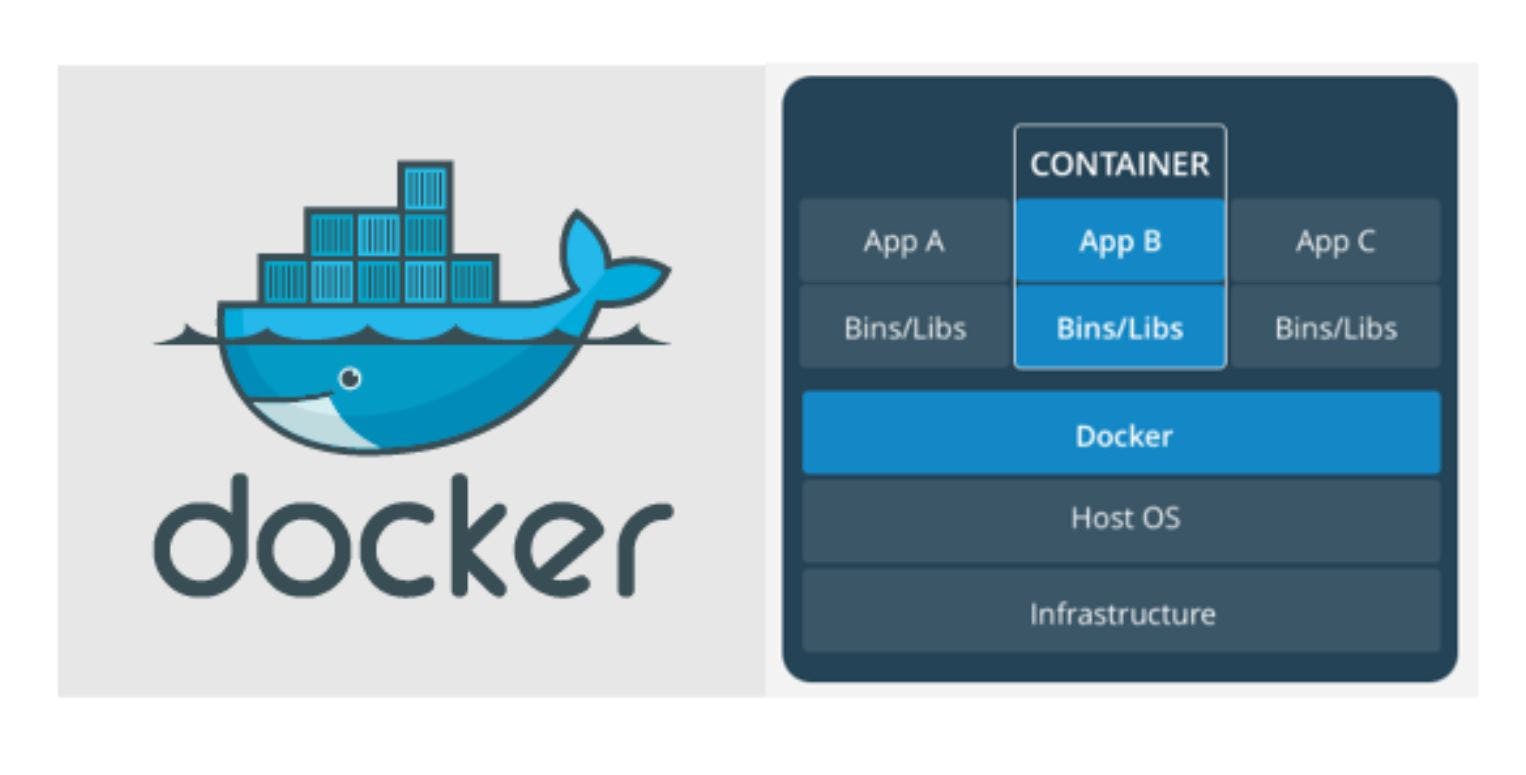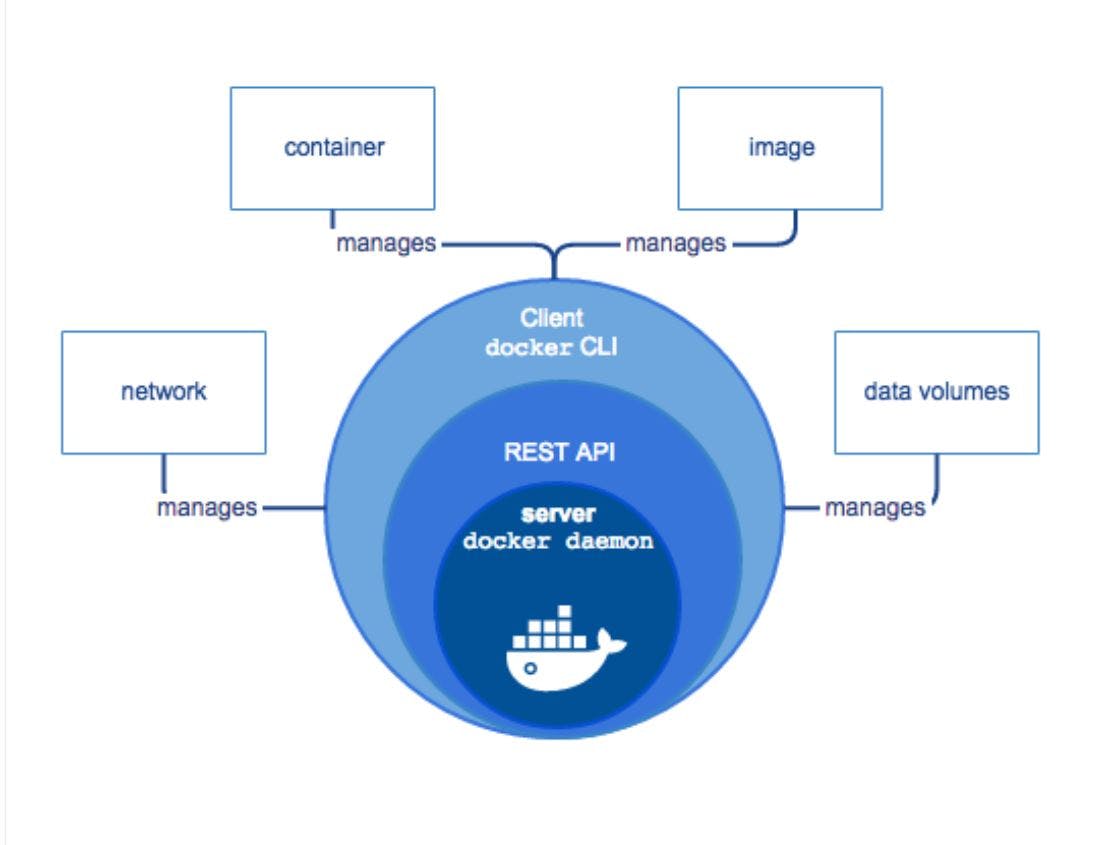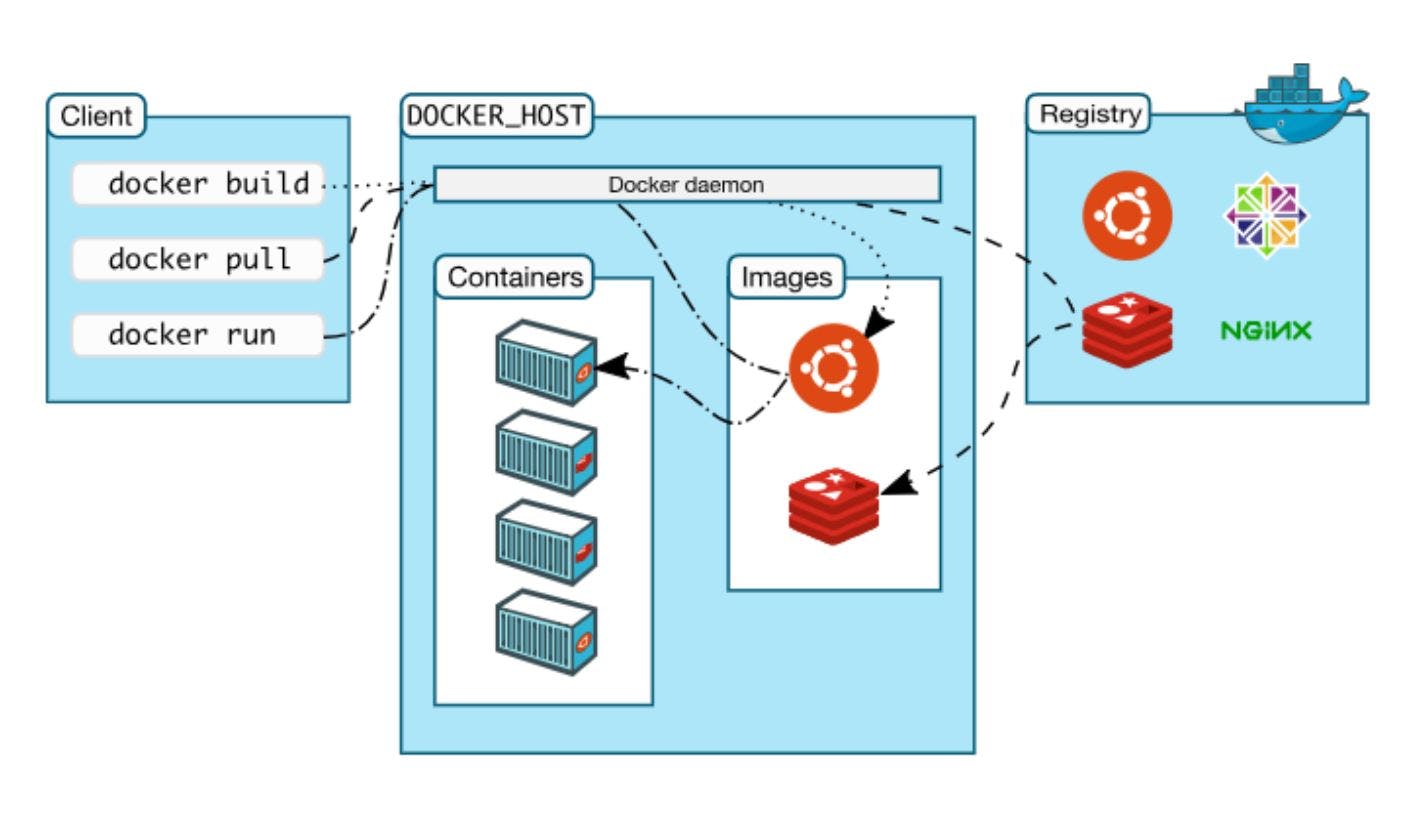Docker is a tool designed to make it easier to create, deploy, and run applications by using containers.
It’s not possible to explain what Docker is without explaining what containers are, so let’s look at a quick explanation of containers and how they work.
A container is a special type of process that is isolated from other processes. Containers are assigned resources that no other process can access, and they cannot access any resources not explicitly assigned to them.

Components of a Docker architecture
Docker comprises the following different components within its core architecture:
- Images
- Containers
- Registries
- Docker Engine
Images
Images are like blueprints containing instructions for creating a Docker container. Images define:- Application dependencies
- The processes that should run when the application launches
You can get images from DockerHub or create your own images by including specific instructions within a file called Dockerfile.
Containers
Containers are live instances of images on which an application or its independent modules are run.In an object-oriented programming analogy, an image is a class and the container is an instance of that class. This allows operational efficiency by allowing to you to multiple containers from a single image.
Registries
A Docker registry is like a repository of images.The default registry is the Docker Hub, a public registry that stores public and official images for different languages and platforms. By default, a request for an image from Docker is searched within the Docker Hub registry.
You can also own a private registry and configure it to be the default source of images for your custom requirements.
Docker Engine
The Docker Engine is of the core components of a Docker architecture on which the application runs. You could also consider the Docker Engine as the application that’s installed on the system that manages containers, images, and builds.A Docker Engine uses a client-server architecture and consists of the following sub-components:
- The Docker Daemon is basically the server that runs on the host machine. It is responsible for building and managing Docker images.
- The Docker Client is a command-line interface (CLI) for sending instructions to the Docker Daemon using special Docker commands. Though a client can run on the host machine, it relies on Docker Engine’s REST API to connect remotely with the daemon.
- A REST API supports interactions between the client and the daemon.

Why is Docker so popular ?
Docker is popular because of the possibilities it opens for software delivery and deployment. Many common problems and inefficiencies are resolved with containers.The main reasons for Docker’s popularity are:

Ease of use A large part of Docker’s popularity is how easy it is to use. Docker can be learned quickly, mainly due to the many resources available to learn how to create and manage containers. Docker is open-source, so all you need to get started is a computer with an operating system that supports Virtualbox, Docker for Mac/Windows, or supports containers natively, such as Linux.
Faster scaling of systems Containers allow much more work to be done by far less computing hardware. In the early days of the Internet, the only way to scale a website was to buy or lease more servers. The cost of popularity was bound, linearly, to the cost of scaling up. Popular sites became victims of their own success, shelling out tens of thousands of dollars for new hardware. Containers allow data center operators to cram far more workloads into less hardware. Shared hardware means lower costs. Operators can bank those profits or pass the savings along to their customers.
Better software delivery Software delivery using containers can also be more efficient. Containers are portable. They are also entirely self-contained. Containers include an isolated disk volume. That volume goes with the container as it is developed and deployed to various environments. The software dependencies (libraries, runtimes, etc.) ship with the container. If a container works on your machine, it will run the same way in a Development, Staging, and Production environment. Containers can eliminate the configuration variance problems common when deploying binaries or raw code.
Flexibility Operating containerized applications is more flexible and resilient than that of non-containerized applications. Container orchestrators handle the running and monitoring of hundreds or thousands of containers.
Container orchestrators are very powerful tools for managing large deployments and complex systems. Perhaps the only thing more popular than Docker right now is Kubernetes, currently the most popular container orchestrator.
Software-defined networking Docker supports software-defined networking. The Docker CLI and Engine allow operators to define isolated networks for containers, without having to touch a single router. Developers and operators can design systems with complex network topologies and define the networks in configuration files. This is a security benefit, as well. An application’s containers can run in an isolated virtual network, with tightly-controlled ingress and egress paths.
The rise of microservices architecture The rise of microservices has also contributed to the popularity of Docker. Microservices are simple functions, usually accessed via HTTP/HTTPS, that do one thing — and do it well.
Software systems typically start as “monoliths,” in which a single binary supports many different system functions. As they grow, monoliths can become difficult to maintain and deploy. Microservices break a system down into simpler functions that can be deployed independently. Containers are terrific hosts for microservices. They are self-contained, easily deployed, and efficient.
Docker alternatives
Although Docker is one of the most popular choices for application containerization, there are alternatives:Containerd : Originally a tool that was part of the Docker ecosystem, this Docker alternative has morphed into its own high-level container runtime. Unlike Docker, which handles network plugins and overlays, Containerd abstracts these functionalities and focuses on running and managing images.
LXC/LXD Linux Containers : An open-source containerization platform with a set of language bindings, libraries, and tools that enables the creation and management of virtual environments. Being tightly bound to the Linux ecosystem, its adoption rate is comparatively limited.
Core OS rkt : Pronounced as “rocket”, this is another open-source software containerization alternative to Docker. An essential feature of rkt is that it is arguably a more secure containerization platform that fixes some of the vulnerable flaws within Docker’s design.
